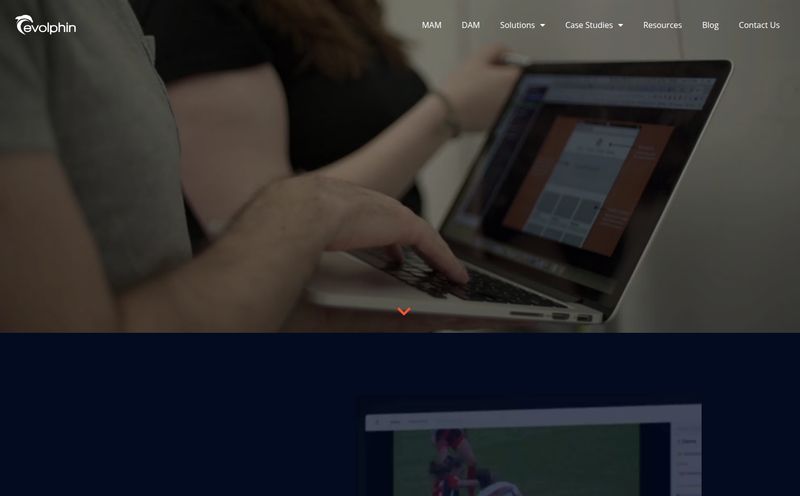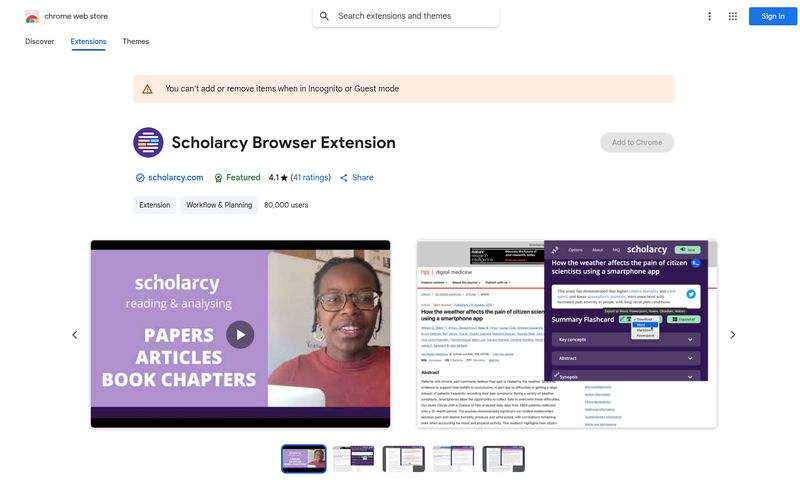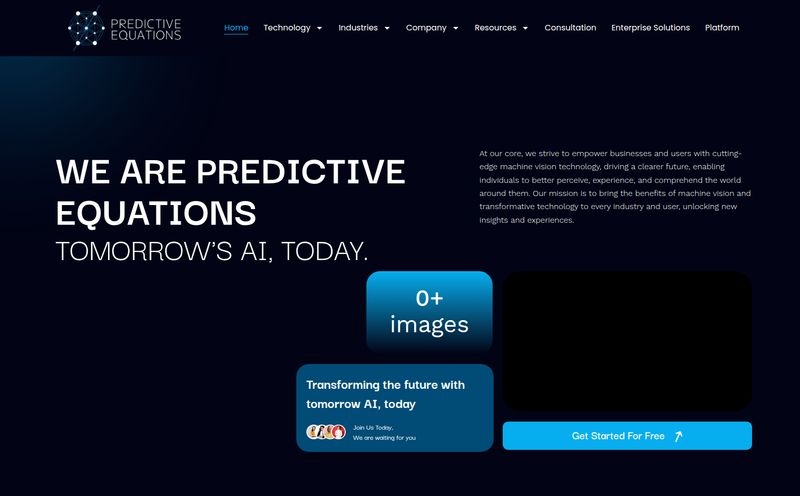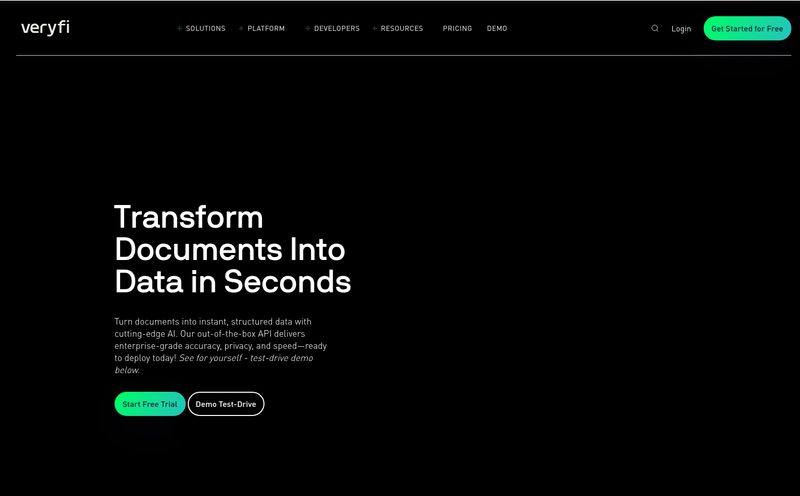Every time I have to onboard with a new service and it redirects me to some third-party platform for ID verification, a little part of my soul shrivels up. I upload my driver’s license into a web form that looks like it was designed in 2007, hold my face up to the camera, and just... hope. Hope my data doesn’t end up in the next big breach headline. As a business owner, the thought of putting my own users through that, and taking on that third-party risk, is even worse.
For years, the industry has trended towards SaaS solutions for everything, and identity verification is no exception. We've been taught to just plug in an API from a big provider and trust them with our most sensitive user data. But what if there was another way? A way to get top-tier biometric security without shipping your data off to someone else's server farm. That's the promise of Faceplugin, and I have to say, it’s a compelling one.
This isn't your typical plug-and-play SaaS. Faceplugin is a different beast entirely. It’s a solution for companies that want to take back control.
What Exactly is Faceplugin? More Than Just a Pretty Face (Recognition)
At its core, Faceplugin provides a set of powerful Software Development Kits—or SDKs for short. Think of it less like ordering a pre-made meal and more like getting a professional chef's toolkit and a box of high-end ingredients. You're not just using a service; you're building a capability directly into your own applications. Your tech team integrates these tools into your mobile app or backend system to create a completely native and self-contained eKYC (Know Your Customer) and identity verification pipeline.
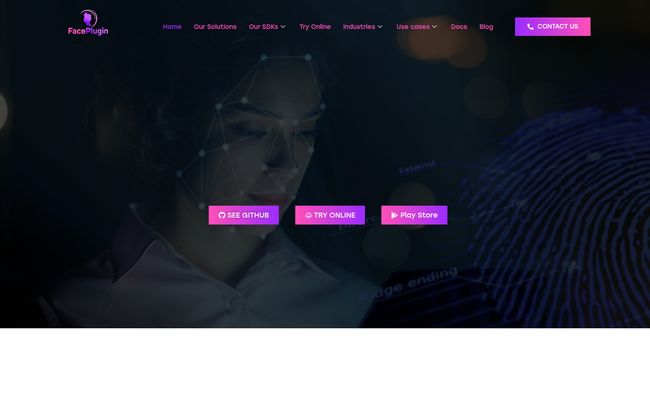
Visit Faceplugin
The tech stack here is seriously impressive. We're talking about:
- Face Recognition: The foundational tech for matching a user's face to their ID photo.
- Face Liveness Detection: This is crucial. It ensures the person in front of the camera is real, alive, and not just a photograph or a deepfake video.
- ID Document Recognition: Scans and extracts information from hundreds of types of government-issued IDs from around the world.
- Palm Recognition: Now this is an interesting one. A less common but powerful biometric identifier that adds another potential layer of security.
But the real showstopper, the feature that made me sit up and pay attention, is the deployment model. It's all on-premises. And that changes everything.
The On-Premises Advantage: Why This Matters More Than Ever
In a world of GDPR, CCPA, and a million other data privacy regulations, the phrase "on-premises" is like a soothing balm for the anxious C-suite executive. It means the software and, more importantly, your users' biometric data, never leaves your own servers. You control the environment. You control the security. You control the data.
Faceplugin's own site boldly claims "0+ Spy-scandals" and "0+ Data leaks." It's a bold marketing statement, but with an on-prem model, it’s actually credible. They can't leak what they don't have. This is a monumental advantage for anyone in fintech, healthcare, government services, or any industry where data residency and security are not just best practices but legal requirements.
You're not just outsourcing a function; you're insourcing the control. The peace of mind that comes with that is, for some businesses, priceless.
A Closer Look at Faceplugin's Core Features
It's not enough to just keep data on-site; the tools themselves have to be top-notch. And from what I've seen, Faceplugin is competing at a high level.
Next-Gen Face Recognition and Liveness Detection
Anyone can build a simple face-matching tool. The real challenge is stopping fraud. This is where "Presentation Attack Detection" (PAD) comes in. It’s a fancy term for technology that can spot fakes—printed photos, screen displays, masks, you name it. It's designed to ensure a real person is genuinely present for the scan.
While digging around their site (I actually hit a 404 page at one point, which is how I stumbled upon this), I found their certifications. Faceplugin is iBeta Level 1 and Level 2 certified for ISO 30107-3 compliance. For the non-geeks, that's a rigorous, independent third-party test that confirms their tech is highly effective at stopping spoofing attacks. This isn't just marketing fluff; its a verifiable stamp of approval.
Seamless ID Document and Palm Recognition
The ID document scanning is the other half of the KYC coin. You need to quickly and accurately pull data from a driver's license or passport to verify against user-inputted information. Faceplugin handles this for a wide array of international documents.
And then there's the palm recognition. I'll admit, this feels a bit futuristic, like something out of Minority Report. But as an optional, additional factor of authentication, it’s a very cool and surprisingly robust biometric. It offers another way to create a unique and secure profile for a user, completely independent of their face or documents.
The Developer’s Playground: SDKs and Customization
Because this is an SDK, it's built for developers. They offer kits for both server-side and mobile (iOS/Android) implementation, giving you the flexibility to build the verification flow wherever it makes the most sense for your user experience. What's particularly helpful is their promise of "customization assistance" and "free integration and maintenance support." This seems to directly address the primary drawback of any SDK: the integration effort. It looks like they don't just throw the code over the wall and wish you luck.
The Big Question: What's the Catch? Pricing and Practicalities
Alright, let's talk about the elephant in the room. You won't find a pricing page on the Faceplugin website. This is a classic B2B enterprise sales model: "Contact us for pricing." While that can be frustrating for those of us who like to window shop, it makes sense for this kind of product. The cost will depend on the scale of your implementation, the specific features you need, and the number of users.
However, they do mention something incredibly interesting: perpetual licenses. In a world dominated by monthly or yearly SaaS subscriptions that bleed you dry over time, this is a breath of fresh air. The idea of a one-time purchase for a core piece of technology is almost retro, but in a good way. It allows for predictable budgeting and could lead to a significantly lower total cost of ownership over the long run compared to a recurring fee model.
The main practicality, of course, is that you need a technical team. This isn't a solution for a small business owner running a WordPress site. You need developers who can work with SDKs and integrate them into your existing infrastructure. This is the trade-off for ultimate control.
So, Who Is Faceplugin Actually For?
In my opinion, the ideal customer for Faceplugin is a business that has reached a certain level of maturity and has specific, non-negotiable security requirements. I’m thinking of:
- Fintech and Neobanks: Where KYC and Anti-Money Laundering (AML) rules are strict and data security is paramount to building customer trust.
- Digital Health Platforms: Handling sensitive patient information (PHI) means data privacy is not just a feature, but a legal and ethical obligation.
- Large Enterprises or Government Agencies: Organizations with strict data residency laws that forbid customer data from leaving a specific country or region.
- Any Tech Company Building a Moat: For businesses that want to build a competitive advantage around a seamless, secure, and completely in-house user onboarding experience.
If you're a company that flinches at the thought of another third-party data processor in your stack, you're exactly who Faceplugin is trying to talk to.
My Honest Take on Faceplugin
I'm genuinely impressed by the approach. For years, the trade-off has been convenience versus control. Faceplugin challenges that. It offers the advanced biometric technology you'd expect from a top-tier provider but puts the keys back in your hands. The on-premises model, combined with the iBeta certifications, creates a powerful argument for any security-conscious organization.
Yes, it requires development resources. It's not a simple switch to flip. But the move toward a perpetual license model is a massive pro in my book, especially for long-term financial planning. It's a strategic investment in your infrastructure, not just another operational expense on your credit card statement.
Frequently Asked Questions about Faceplugin
- How much does Faceplugin cost?
- Faceplugin uses a custom pricing model based on your specific needs. They offer perpetual licenses, which means it's a one-time purchase rather than a recurring subscription. You'll need to contact their sales team for a quote.
- Is Faceplugin secure?
- Yes. Its primary security feature is the on-premises deployment, which means your user's sensitive data never leaves your servers. Furthermore, their technology is iBeta Level 1 and 2 certified for Presentation Attack Detection, proving its resilience against spoofing and fraud.
- Do I need a developer to use Faceplugin?
- Absolutely. Faceplugin is delivered as a Software Development Kit (SDK). It requires a software development team to integrate the technology into your mobile or web applications.
- What is 'liveness detection' and why is it important?
- Liveness detection is technology that verifies a person is physically present and real during a biometric scan. It's critical for preventing fraud where criminals might use a photo, video, or mask of someone else to try and pass an identity check.
- What does an on-premises solution mean?
- It means the software runs entirely on your own company's servers, not on Faceplugin's cloud servers. This gives you complete control and custody over the application and all associated data, which is a major benefit for privacy and security.
- What platforms does Faceplugin support?
- They provide both server and mobile SDKs. This indicates broad support for integration with various backend systems as well as native applications on platforms like iOS and Android.
Final Thoughts: Taking Back Control of Your Verification Pipeline
In the end, Faceplugin represents a significant shift in thinking. It’s a move away from renting a critical piece of your security infrastructure to truly owning it. For the right company, this isn’t just a new tool; it's a strategic decision to prioritize data sovereignty and build a more robust, secure, and trustworthy platform.
The upfront work is greater than with a simple SaaS API, there's no denying it. But the long-term benefits—in cost, security, and control—could be immense. If your business treats user data as the crown jewels, then building your own vault with tools like Faceplugin, instead of just renting a safety deposit box, might be the smartest move you can make.
